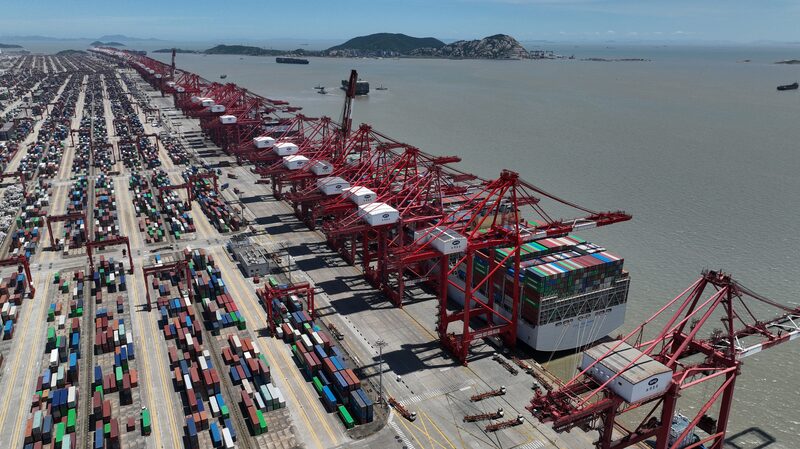Docked at Quanzhou port in southeast China’s Fujian Province, a very large crude carrier (VLCC) with a deadweight tonnage of 300,000 tonnes is making waves in maritime innovation. After completing three oil delivery trips, this massive vessel has demonstrated significant fuel savings thanks to its bionic dolphin skin propeller.
Inspired by the unique micro-structure and flexibility of dolphin skin, researchers from the Ningbo Institute of Materials Technology and Engineering under the Chinese Academy of Sciences, in collaboration with COSCO SHIPPING Energy Transportation Co., Ltd., developed an artificial bionic skin for ship propellers. This innovative skin reduces friction between the propeller and water, leading to remarkable energy efficiency.
According to media reports, the bionic skin has saved about 2 percent of the crude carrier’s fuel consumption. Over an average 2.5-year maintenance cycle, it is estimated to save 1.5 percent of energy. For a VLCC, this translates to over 300 tonnes of fuel saved annually, yielding direct economic benefits exceeding 1 million yuan (approximately $140,000) and reducing carbon dioxide emissions by more than 900 tonnes.
Sea transportation is a backbone of global economic activity, but it consumes vast amounts of energy and significantly contributes to greenhouse gas emissions. The development of the bionic dolphin skin represents a crucial breakthrough in energy conservation technologies for large carriers, pushing the green transformation of the global maritime transport industry.
“The bionic dolphin skin has a comparatively simpler structure and is more cost-effective than previous designs like bionic shark skin,” said Zeng Zhixiang, a researcher at the institute. “It consists of liquid-like dynamic interfacial materials and flexible materials with microstructures between 0.1 and 0.2 millimeters.”
The technology’s cost-effectiveness is notable, with the expense of applying the bionic dolphin skin to a propeller estimated at around $20,000. Once applied, the skin reduces shear force with the water, counteracts reverse thrust, improves propeller efficiency, and reduces energy consumption.
The VLCC equipped with the bionic skin has sailed over 35,000 nautical miles between Chinese coastal ports and major Middle Eastern ports over approximately 200 days. The bionic flexible drag-reducing material used complies with the International Convention for the Control of Harmful Anti-fouling Systems on Ships.
COSCO SHIPPING Energy Transportation and the Ningbo Institute plan to promote the application of the bionic skin technology in over 100 crude carriers. This widespread adoption could provide significant economic benefits and effectively reduce carbon dioxide emissions, marking a significant step towards sustainable maritime transportation.
Reference(s):
cgtn.com






